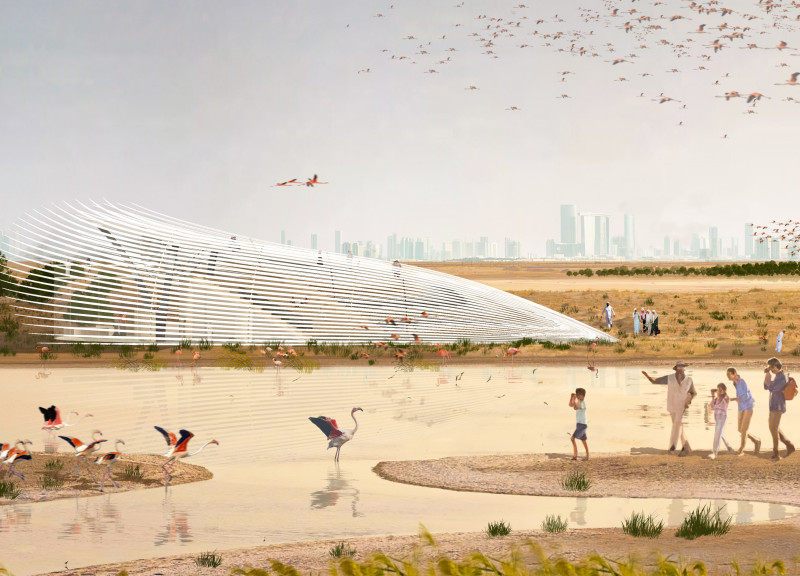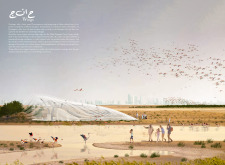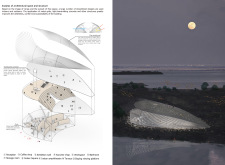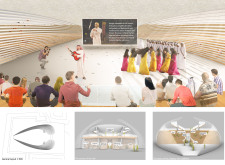5 key facts about this project
The Abu Dhabi Flamingo Visitor Center is located within the wetlands of Abu Dhabi, serving as a space for visitors to connect with nature and learn about small, vibrant birds. The design draws inspiration from the flamingo, particularly focusing on the shape of wings, which symbolizes grace and freedom. This guiding concept shapes both the exterior and interior spaces of the center, creating an inviting environment for exploration.
Architectural Form
The building has a unique form that evokes the image of wings extending outward. This layout allows for natural movement through various functional areas, making it easy for visitors to navigate the center. Key spaces such as a reception area, coffee shop, exhibition wall, souvenir shop, workspace, restrooms, and an indoor square are carefully arranged to enhance interaction and engagement within the space. Such organization fosters a welcoming atmosphere for everyone.
Materiality and Aesthetic
A striking feature of the design is the metal grid that covers the facade. This element resembles feathers, providing an engaging visual texture. The grid serves a practical purpose as well; it enhances ventilation and allows light to permeate the interior. Translucent concrete is also utilized, encouraging soft light to enter while maintaining privacy. Together, these materials create an environment that feels both connected to nature and comfortable for visitors.
Visitor Engagement and Experience
The center features an indoor square that can host events, performances, and gatherings, promoting community involvement. Visitors are also encouraged to explore the terrace and sloping viewing platform, which provide great opportunities to observe the flamingos in their natural habitat. Careful consideration of sight lines ensures that guests can fully appreciate the beauty of the wetlands and their inhabitants.
The changing light throughout the day creates interesting patterns across the building, offering a dynamic experience. Shadows play against the surfaces, enhancing the connection between the architecture and the surrounding environment. Each aspect of the design contributes to a cohesive experience that invites individuals to engage with both the structure and the vibrant ecosystem it supports.






















































